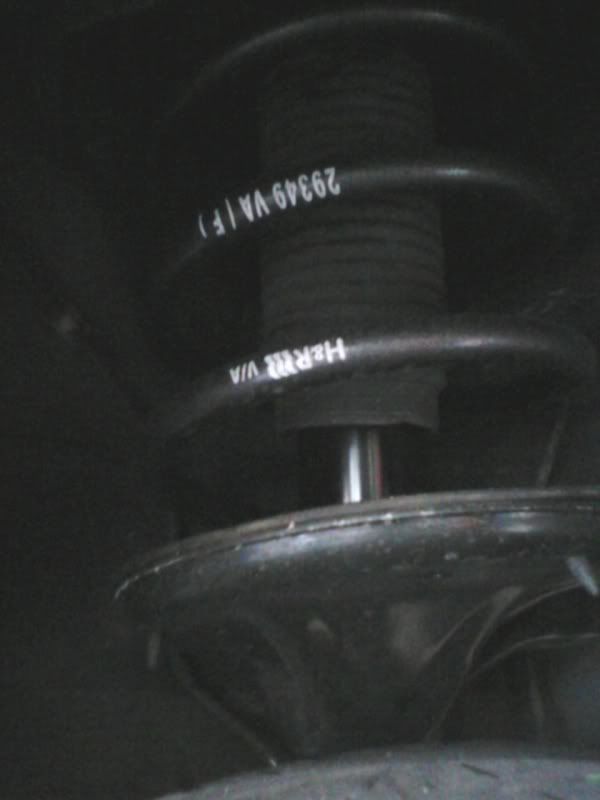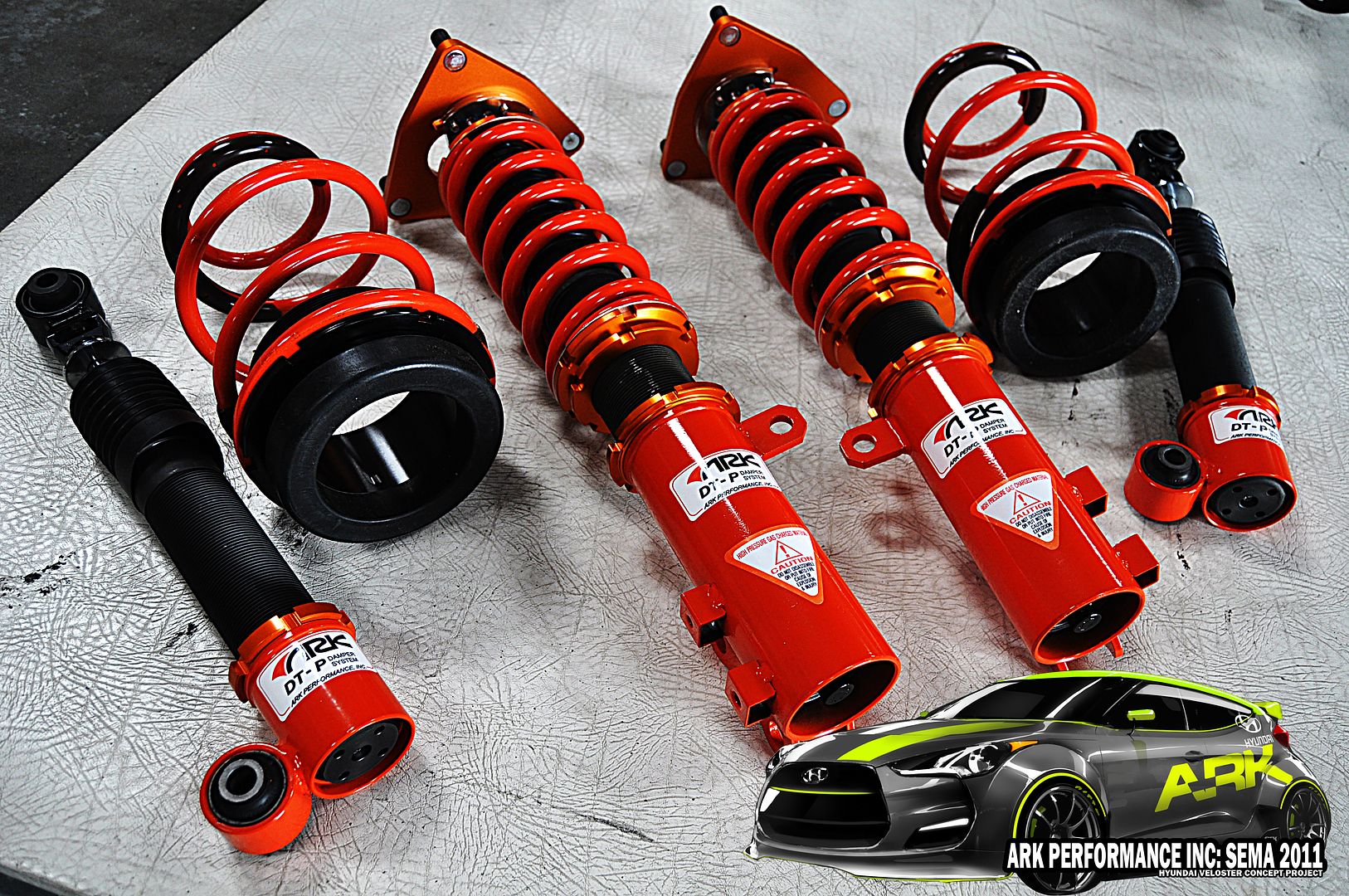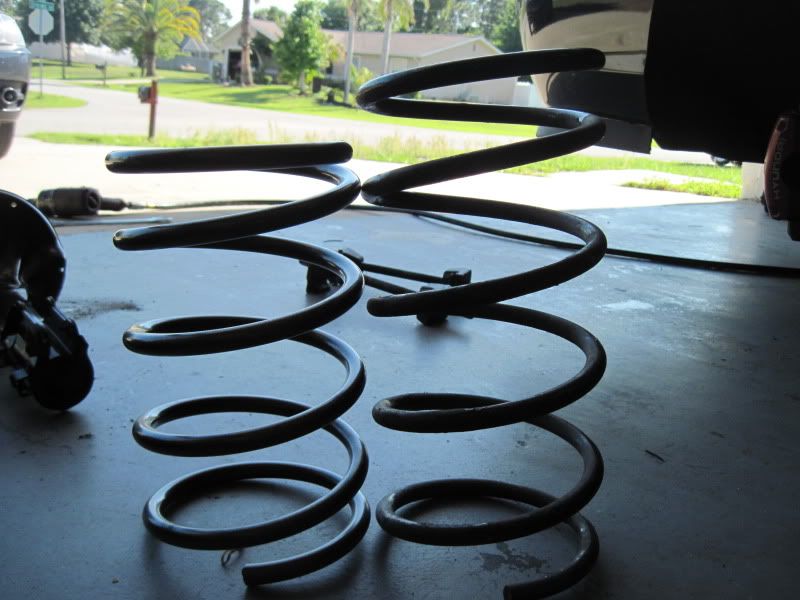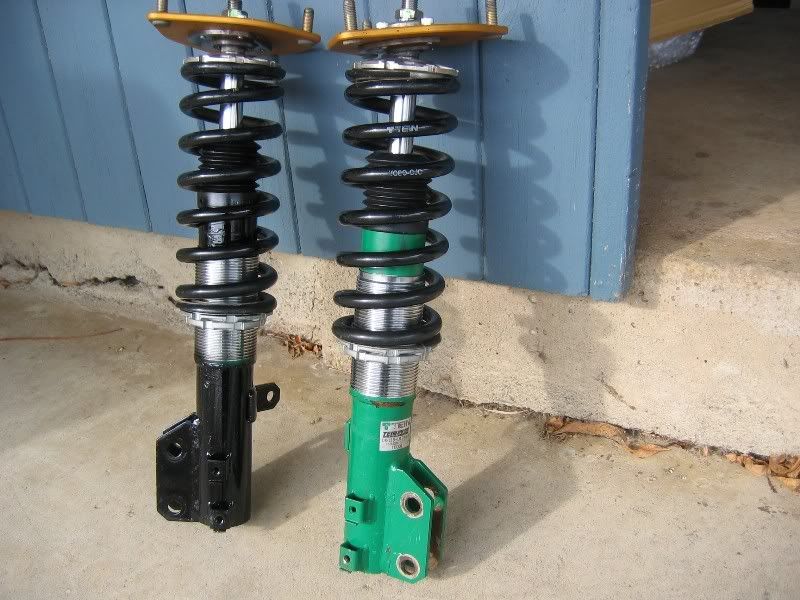Get sprung...
The world of aftermarket suspensions can be incredibly complicated and if you do not know what your getting yourself into you can actually spend more money then you intended or buy something that you have no use for. I will attempt to explain the differences between spring/strut, sleeve coilovers, and full coilover suspension systems. There are many reasons why people swap our their OEM suspensions for aftermarket ones. It can be as simple as wanting to lower the stance all the way up to full time track use. This is where it can become quite diluted and you may loose your way. When looking for suspension components you must have a realistic idea of what you are going to do with your vehicle. Are you going to be doing Track days or autocross? Or just simply some curvy road carving? You do NOT want to spend money on full coilovers if your not going to use them. Its kinda like the old guy that buys the Z06 Corvette just he can park in the garage and drive it on Sundays...on the highway...in the left lane doing 65mph. THAT is not what it is intended for and I cringe every time I see it happen.
Please don't...
 Ok lets start with sleeve style coilovers. I know its a weird spot to start, but I will tell you that I do NOT recommend them at all. Most of the people that buy these styles of coilovers are looking to go as low as they can for as cheap as they can. In the car world, its the worst case scenario. Going too low will actually hurt the vehicle dynamics and have an ill affect on handling. Most of the time they also use the OEM struts and do not care about the ride quality. What happens is the OEM struts are not designed to be lowered and you effectively reduces the struts ability to control the spring (especially considering the sleeve style coils are very very stiff). This is when you see cars kinda bouncing along the road whenever they hit bumps. This is not good for anything. So please...do yourself a favor and stay away!!
Ok lets start with sleeve style coilovers. I know its a weird spot to start, but I will tell you that I do NOT recommend them at all. Most of the people that buy these styles of coilovers are looking to go as low as they can for as cheap as they can. In the car world, its the worst case scenario. Going too low will actually hurt the vehicle dynamics and have an ill affect on handling. Most of the time they also use the OEM struts and do not care about the ride quality. What happens is the OEM struts are not designed to be lowered and you effectively reduces the struts ability to control the spring (especially considering the sleeve style coils are very very stiff). This is when you see cars kinda bouncing along the road whenever they hit bumps. This is not good for anything. So please...do yourself a favor and stay away!! Get lower...
There are going to be a TON of options for lowering springs. Again this comes down to how low you want to go and your purpose. If you are just wanting to lower the car a little to get rid of that unsightly wheel gap, then lowering springs are for you. If you are just want something a tick stiffer to take some corners faster then lowering springs are for you as well. Lowering springs have a higher spring rate (this being the amount of pressure it takes to compress the spring...so if its stiffer it takes more weight to compress it the same amount of distance). They usually range from an inch to about an inch and three quarters in drop. Now with lowering the car you also have to remember that you are taking away the equal amount of dampening. So if you lower the car 1.5 inches (like I have with my H&R springs) you take away an equal amount from the dampener. What that means is that the dampener will have a limited range of motion. (Fortunately for me, I had another option and lost almost no suspension travel. I'll reveal how I did it when I showcase my car).
 |
| Yes I know the Spring is upside down! |
I like it stiff!...
While this is sometimes true its not necessarily the case. A full coilover system is a spring and shock combination. They are matched to one another, usually have camber plates, adjustable height, and adjustable dampeners (for coils, they are called dampeners). Lets start with the camber plates. These are literally plates where you adjust the camber.
They are ontop of the dampener and come through where the top of the assembly bolts to the body of the vehicle. There are usually four bolts (ones shown here are allen head, pic below) you simply loosen them and slide them in either direction to get the desired camber. Toward the inside of the car for negative camber or pulled out for positive camber. Height adjustability comes in the form of rings that travel up and down. On my TEIN Super Street coilovers I could adjust the height, but it uses the spring perch to raise and lower the spring. Others like the new ARK coilover system have a pretensioner on the spring (this way the spring does not "fall" out of place when you jack the car up. The TEINs would fall out of place and you had to be careful when you lowered the car back down to the ground) and a seperate ring for the height adjustment. Its located at the bottom as shown here. This does NOT affect the strut travel and you have the same amount of travel no matter the drop. The rears are going to be different because the spring and dampener are separate pieces. Dampener control can come on either top of the dampener or the bottom of the dampener.
 |
| Shows adjustablity and the camber plate. |
Again the TEINs had the adjustability (16 way) on the top. You simply just twist the knob to adjust. Ride quality with coilovers is superior to that of just normal drop springs or sleeve coilovers.(though if you get the right spring/strut combo it will ride just as well.) This is because the spring and dampener are matched to one another. Even though it might be quite a bit stiffer the ride quality is not as jolting as one would expect. Often times people who rode in my car did not know I had full coilovers on, but rather thought the OEM suspension was stiff. Coilovers are usually used when trying to lower the car to its optimum spot without loosing suspension travel or your going to be doing events like autocross, redline time attack, or local track days. Another feature with coilovers is that the oil used in the dampener is special in that it has a tendency no to froth up and become foamy. I must say that if you buy the correct struts/dampeners they too will have this advantage.
 | |
| You can see on the ARK there are THREE rings. two are for the tensioner and the bottom being for height adjustability. |
Definitely not the end...
This is just the beginning of suspension tuning. There are a multitude of components that come together to form the suspension. This article is a simple description of what the three are and how they work. Your application will/may vary. In the future, I will be doing an article on my own car and I'll show you what I have done with it over the years. Most of my modifications have been done to the suspension and brakes. I havent touched the motor due to the car being my daily driver, besides I have my eye on a future Hyundai product. So I have to keep this beauty running till it comes out, still even then it will be my winter beater.
Questions? do not hesitate to ask!


Nice article. I don't plan to do anything with my suspeension anytime soon, but this looks like it would be a good place to start.
ReplyDeleteWhich car do you have? Yeah between springs/struts and swaybars, its the most obvious spot to start. Then people usually move on to small modifications like Cold Air Intakes (CAI) and exhaust systems. It really just depends on what you are going to be doing with the car.
ReplyDeleteJust now looking into this for my 2012 Accent (RB) its a daily drive but I also like to have fun and want to get ride of the bad gap this car has. I see you now have a 2012 Accent now? Let me know what you plan to do with it, might copy you :)
ReplyDeleteThanks for the great post, look forward to reading more.
Thanks, that is my dad's car. I do not think he will be touching anything on that car. But be on the lookout for springs to come along shortly. Companies like Eibach, H&R, and some others will more than likely have them soon.
ReplyDelete- Motor Việt Nam lần đầu tiên lắp ráp xe tải hyundai tera 190 tại Việt Nam, xe với thiết kế sang trọng, động cơ mạnh mẽ
ReplyDelete- Giá xe toyota vios 2017 tốt nhất thị trường, Ưu đãi lớn cho khách hàng mua xe mới. Hỗ trợ mua xe Toyota vios 2017 trả góp lên đến 80%, lãi xuất thấp.
- xe toyota altis 2017 đang giảm mạnh để đáp ứng vừa với túi tiền của khách hàng, hỗ trợ tư vấn chu đáo khi mua xe mới.